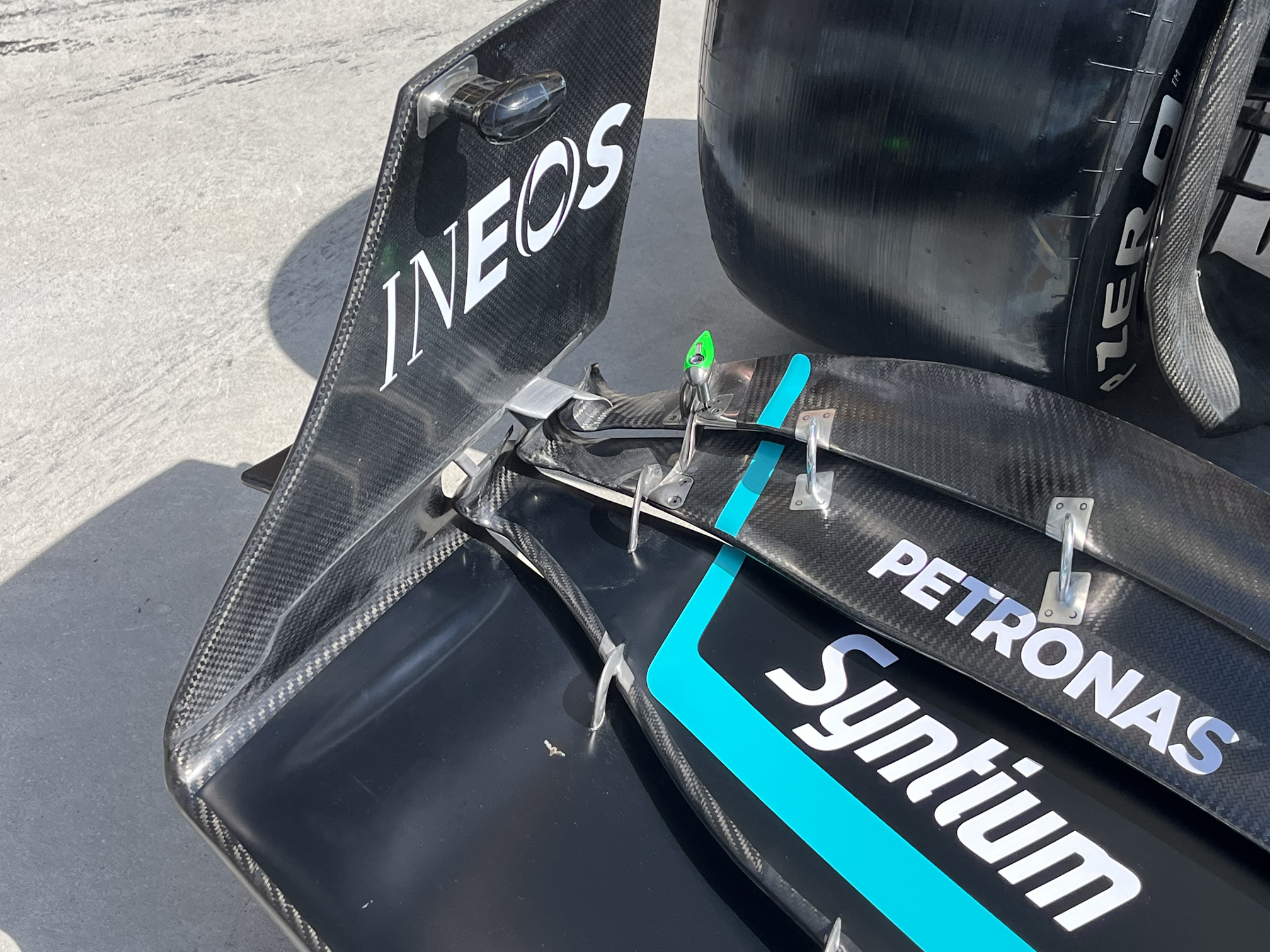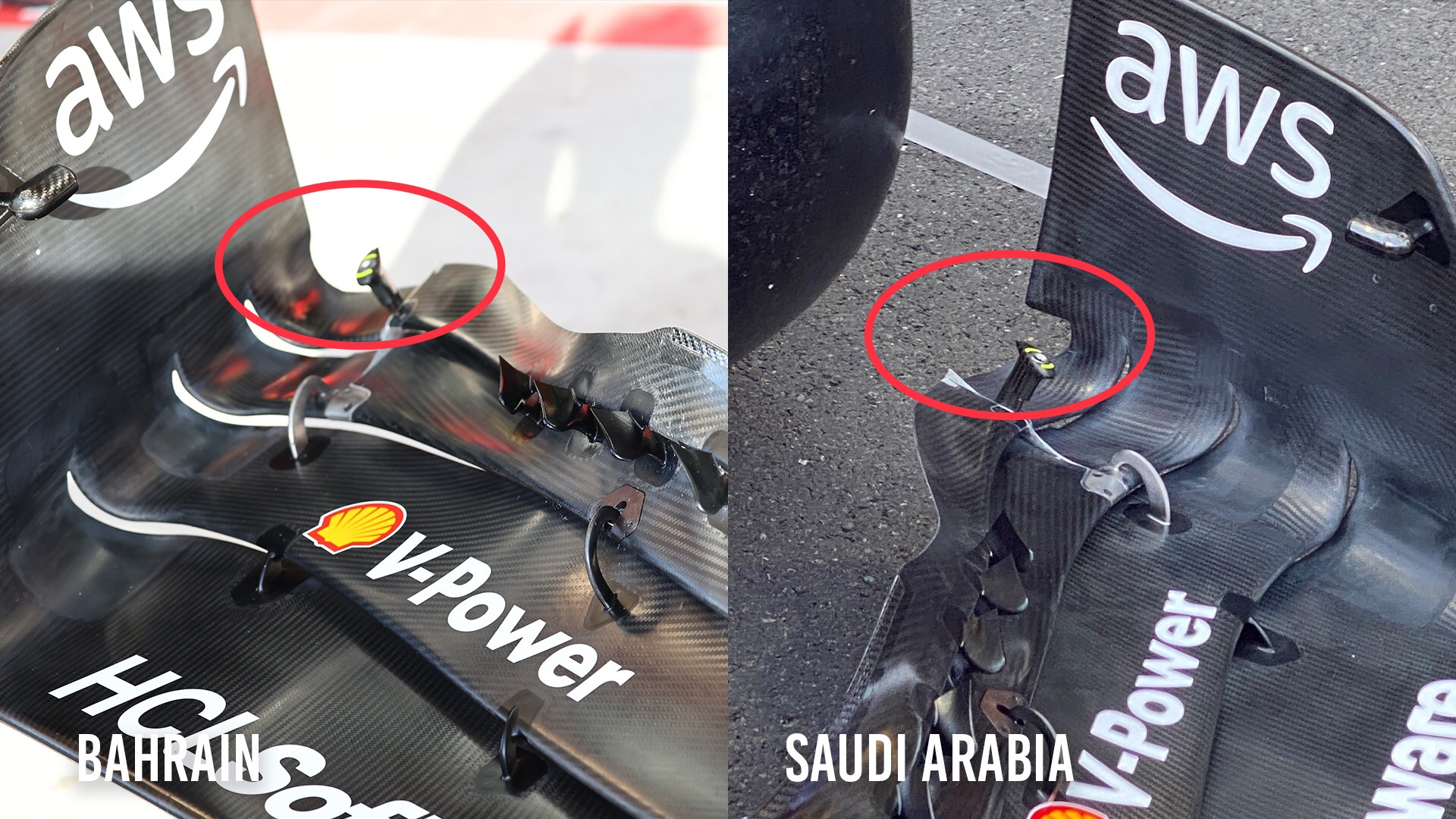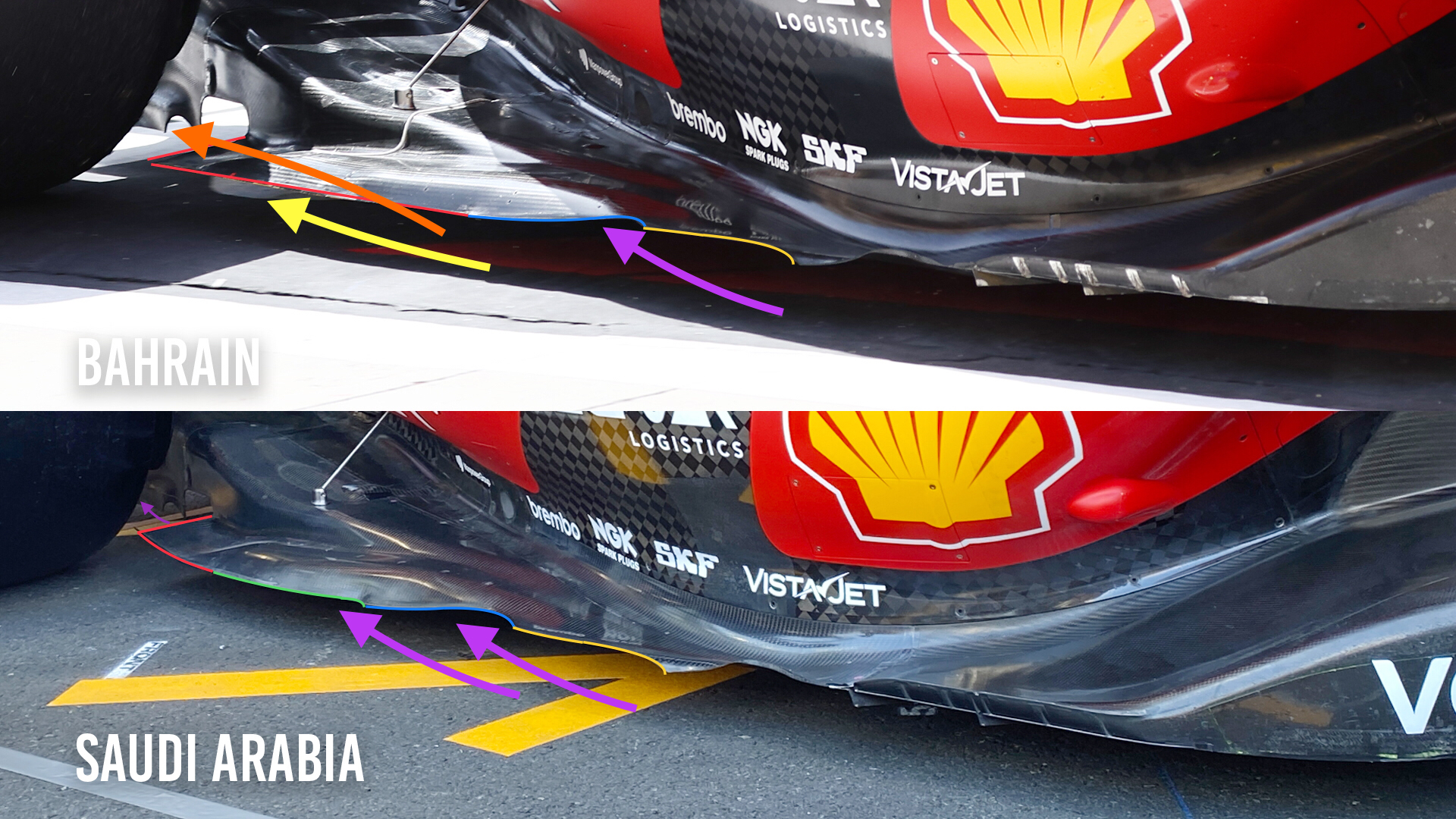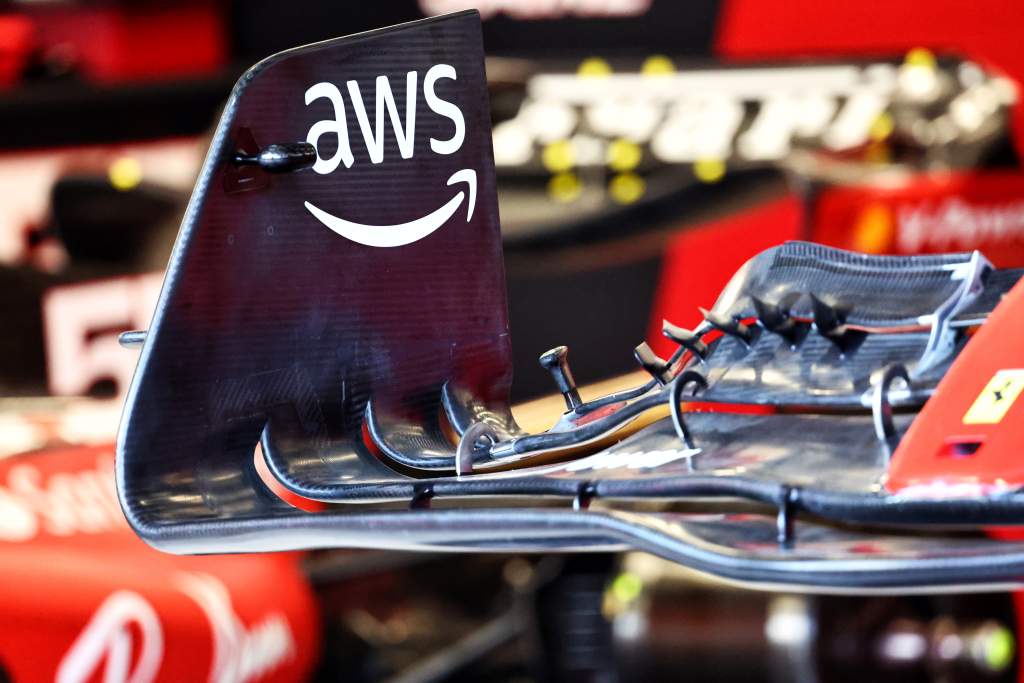Up Next

Ferrari introduced its first upgrades of the 2023 Formula 1 season with a modified front-wing endplate and new floor-edge design for the Saudi Arabian Grand Prix weekend.
As I have always said, you need to start to improve the airflow structure at the front and then move rearwards. Ferrari has done exactly that.
At the endplates Ferrari has followed the trend started by Mercedes last year in shortening the chord length of the front wing flaps where they curve upwards and join onto the front wing endplates. The regulations in this area have changed for this year to minimise the extent you can do this, but that doesn’t stop a team from maximising the idea’s potential.
Mercedes has kept the chord length of the flaps and simply spaced the curved upwards section away from the endplate, leaving a gap. But Ferrari has shortened the chord length of the rearmost flap.

Both of these modifications are to allow more of the airflow that passes over the top surfaces of these flaps to connect up to the outwards front tyre squirt. Achieving this means that you have more outwash, so in effect less inwash, which reduces the impact this turbulent airflow will have on the underfloor entry and the sidepod undercut. A total of 5% more outwash means 5% less inwash, which will have a significant influence on the performance of the underfloor.

Tyre squirt is when airflow is displaced by the front or rear tyre rotating onto the track surface, this squeezes the air outwards or inwards. It’s similar to what you see when the car is running in wet conditions and the water is displaced out from the tyre contact patch.

Ferrari has also altered the detail on the floor edge. The yellow and blue highlighted edge line is very similar but apparently, there are small detail changes. More significant is the change at the rear.
The red highlight line shows it has created a small ramp just in front of the rear tyre. This will act like a small diffuser, as with any diffuser you need to get airflow into it.
The green highlight line shows the change in this area. It also means that when this small red diffuser pulls airflow through the green inlet (magenta arrows) the floor edge height will not be as critical to track clearance.
The orange arrow shows what would happen to that airflow when the floor edges get near the ground and potentially seal. The yellow arrow shows that the airflow would go under the car at higher ride heights.
This should improve the consistency of the underfloor performance from high to low speeds.
Not sealing the airflow as well will reduce the peak downforce, but it’s not the peak downforce that the driver can make the best use of. It’s what I call implementing a ‘dimmer switch’ as opposed to an on/off switch.




